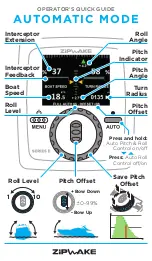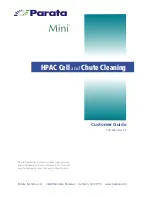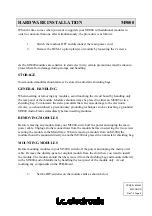
4
FEATURES
We would like to thank you for having purchased a precision GIMA sphygmomanometer.
All GIMA sphygmomanometers are manufactured with high quality materials and, when maintained at perfect
operating efficiency through regular calibration checks, ensure complete reliability and precision, even after
several years of use.
Our line of sphygmomanometers offers the same quality standards for both professional and home models.
The sphygmomanometer you have purchased complies with EEC directive 93/42/CEE.
PRESCRIPTIONS
It must be noted that self-measuring instruments are not a substitute for regular medical checkups,
and that only your doctor can accurately analyze these measurements.
Arterial pressure is highly influenced by one’s nervous tension and physical fatigue. It is therefore recommended
that you
perform the measurement under conditions of both physical and mental relaxation
, while in a
sitting or supine position and, where possible, always at the same time of day, far from meal times.
Remember: do
not move while measuring your pressure
and do not wear clothing that covers your arm and
could limit blood circulation.
Pressure varies during the day: it is lower in the morning and higher in the evening; it is also lower in the summer
and higher in the winter.
Before measuring blood pressure when using a mercury sphygmomanometer, open the column
containing the mercury by turning the lever counter-clockwise. At the end of the measurement, tilt
the device until there is no more mercury in the column and close it by turning the lever clockwise.
INSTALLATION
After opening the packages, first of all it is necessary to check all pieces and parts composing the product. Check
that they are all present and in perfect conditions.
Apply the armband to your bare left arm, 2-3 cm. above your elbow joint, and then prop up your forearm, keeping
it at heart level. Close the armband using the Velcro strap.
If not specifically indicated, all GIMA sphygmomanometers are equipped with armbands for adults; upon
request, we can provide armbands for the obese, for use on the thigh and for children, ranging from premature
babies up to 14-year-olds.
Position the earpiece of the stethoscope (preferably our DUCA model) on the artery, under your arm.
ATTENTION: do not use and do not deposit mercury sphygmomanometers in places subject to risk
of fire.
FUNCTIONING
1)
After applying the armband, use the bulb to pump up to approximately 20 mmHg beyond the level of individual
systolic pressure: in other words, until the brachial artery is blocked (maximum level). It is essential that the
person being measured remains seated and calm, and that his/her
forearm is resting at heart level
, with the
inside part facing up.
2)
To measure blood pressure, turn the release/deflation screw on the bulb, unscrewing it slowly in a counter-
clockwise direction. The ideal deflation speed is around
2-3 mmHg/sec.
Visually check deflation speed: on the scale, the indicator must move at a speed of between 1 and 1.5 gradations
per second.
The models featuring automatic deflation of the gauge, which automatically regulates deflation speed at 2-3
mmHg/sec. Simply press the valve up to the first pressure point.
3)
Due to the gradual decompression, your blood starts to run through the brachial artery again, which in turn
causes an initial pulsation, that is clearly perceived by the phonendoscope: the pressure indicated on the gauge
needle at the exact moment this first beat is recorded is referred to as the
“systolic or maximum pressure”
.
Systole = maximum pressure level when the heart contracts and blood is pushed into the blood vessels.
As you proceed with decompression, the pulsations gradually decrease until they suddenly disappear or become
so low as to be imperceptible.





















